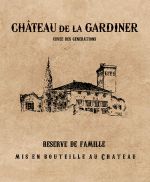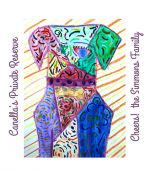
Someone should seriously make a full-length movie about the rise, fall and rebirth of Carménère. Really. It has all the needed Hollywood tricks one could ever want while telling the story of a loveable, yet edgy protagonist who loses everything only to gain it all back and more. The complexity and uniqueness of Carménère’s history is equal to its taste. This rich, characteristic grape has always held a special place in my heart and here’s why.
First lets get to know our heroine. Despite having low acidity, this wine is very much alive in your glass. Its medium body with aromas of red fruits, spices and berries can often mimic Merlot (more on that in a second), but its bold, earthy spice, layers of tobacco and well-oiled leather put it in a category of its own. With smoother, creamier tannins than its big brother, Cabernet Sauvignon, Carménère truly shines as single varietal or a needed partner in many great red blends.
Originally an extremely important and highly-sought grape variety in Europe, Carménère saw its heyday in the mid 1800’s. Its medium-bodied, yet rich, approachable flavor profile became an instant fan-favorite and demand was at an all-time high. In 1867, however, the infamous phylloxera outbreak led to the destruction of almost every vine in Europe. A resilient bunch, the Europeans knew the only option was to replant…everything. Sadly, this is where the vineyards of Bordeaux turned their back on our heroine. While sharing too many similar characteristics to Merlot, Carménère seemed to fall short in the category of ripening. It’s occasional inability to flower in the cool, damp Bordeaux springs was probably the biggest red flag. In addition, Carménère consistently ripened 3 weeks after Merlot. With lower yields putting a nail in the coffin, it was almost lost forever.
When hope was nearly lost, there shined of glimmer of light. Back in the 1850’s, a few years before the Phylloxera outbreak, the Chileans had been planting more and more vineyards themselves. Highly influenced by the historic grapes of Bordeaux, Chile had already been successfully growing and selling Cabernet Sauvignon, but they were looking to expand their repertoire. Among the new plants being cultivated was Merlot…or so they thought. Unbeknownst to the Chileans, some of their so-called Merlot cuttings were in fact, Carménère. For well over a century, Carménère grew among Merlot hidden in plain site. It all but lost its identity completely.
In 1994, after noticing that Chilean Merlots seemed to be a hell of a lot spicier and more complex than those produced elsewhere, researchers at Montepellier’s school of Oenology found that a few cuttings from sampled vines were in fact Bordeaux Carménère, not Merlot. In 1998, Carménère was officially recognized as a distinct variety by the Chilean Department of Agriculture. And the rest, my friends, is history…albeit recent. Carménère has since regained its popularity around the world and once again found a home in the hearts of wine purists.
Washington also grows amazing Carménère. At Northwest Cellars, we have been producing Carménère since 2007 and 2009 vintage brought home Silver at the American Wine Society and Dallas Morning News Wine Competitions. Look forward to more Carménère from Northwest Cellars in the future.
Drink Northwest Cellars. Cheers!












0 Comments